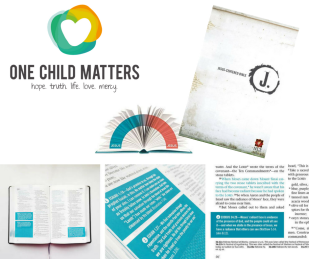
When we began planning the model for the Women’s Ministry Council meetings, we needed to first figure out how often and when we should meet. One thing that we recognized was that in most cases Women’s Ministry Leaders were volunteer leaders not staff members. Many of these women had part or full time weekday jobs, they usually served in their churches, and of course they were running women’s ministry for their church.
Due to these conclusions we decided the best thing was to have a quarterly meeting, on a Saturday morning. Quarterly meant that we didn’t tax their schedules or take more time away from their family. It was an easier schedule to manage and prepare for on our end as well. Knowing that quite a few ministries had set meeting dates (such as always meeting on the first Saturday of the month), we found a unique solution. We decided the WMC would meet any month where there was a 5th Saturday. Turns out 5th Saturdays are only four times a year, which fit our quarterly plan perfectly. Occasionally we had to reschedule, when the 5th Saturday landed on a major holiday (Easter, Christmas).
Only planning for 4 meetings per year means that we consider those dates with great weight. For the first several years, our team would go to annual conferences during the summer and pick up resources. We would develop our calendar around that. From there you can begin to ask for feedback on what other topics to cover in the future.
For the first several years we also obtained donated books on leadership or ministry that we would gift to our attendees. We are so grateful for the support of publishing houses that stood behind the work we were doing. Eventually we stopped the practice. Being a steward of these gifts was important to me. We had limited seating. I wanted to make sure those who were coming did so for the right reasons (fellowship, equipping, supporting) and not just free resources. We still have little gifts we give to those who attend. We want the women to feel loved on too.
In the beginning, we had 3 topics per meeting, over a 2 hour span. Including time to fix a plate of snacks and coffee, bathroom breaks, etc. Eventually we changed that up as well. We adjusted the number of topics, invited community organizations and ministries to present, etc. Ultimately landing on the right balance. 20 Minutes of Fellowship, 15 minutes of “Welcome/Announcements/Prayer, a brief 20 minute speaker. 5-10 minute Bathroom break, then returning for a 30 minute speaker, 10 minute presentation from a community group/ministry, and 15 minutes for closing announcements, prayer.
The community groups and ministries we invite to speak are the ones who are the hands and feet of Jesus in the community even if not part of a church. Sometimes it is a secular program, as well. The purpose is to educate our leaders of the need/work being done in the community, and then for the organization to let us know how our ministries and churches can partner with them. This may be money/good drives, hands on volunteering, etc. It connects the community and the churches, which is always a good thing.
Your very first meeting can be a meet and greet, where you just share your heart for gathering together as leaders. Get to know one another, share the vision/mission, get feedback from the attendees on things they may be interested in speaking/presenting, or what subjects could be addressed.
Outside of these quarterly training meetings, consider other options like… fellowship nights, prayer meetings, and group service projects. Optional events that just allow those who want to get to know each other better, deeper.
We have always kept our quarterly WMC meetings FREE, but we do take an offering. We have a drawing for prizes among those who attend. And, we also have a facebook group where we can communicate with each other between meetings for added support.








